1) The document discusses various aspects of collection management in libraries such as stock verification, stock rectification, weeding of resources, and causes of book loss.
2) It describes different methods of conducting stock verification such as using accession registers, separate sheets, shelf lists, and numerical counting.
3) The advantages and disadvantages of stock verification are provided. While it identifies lost books, it also disrupts regular library operations and may not serve a useful purpose.
4) Steps to minimize book loss like increased security and monitoring are suggested along with the need to weed outdated materials to preserve space for new additions.





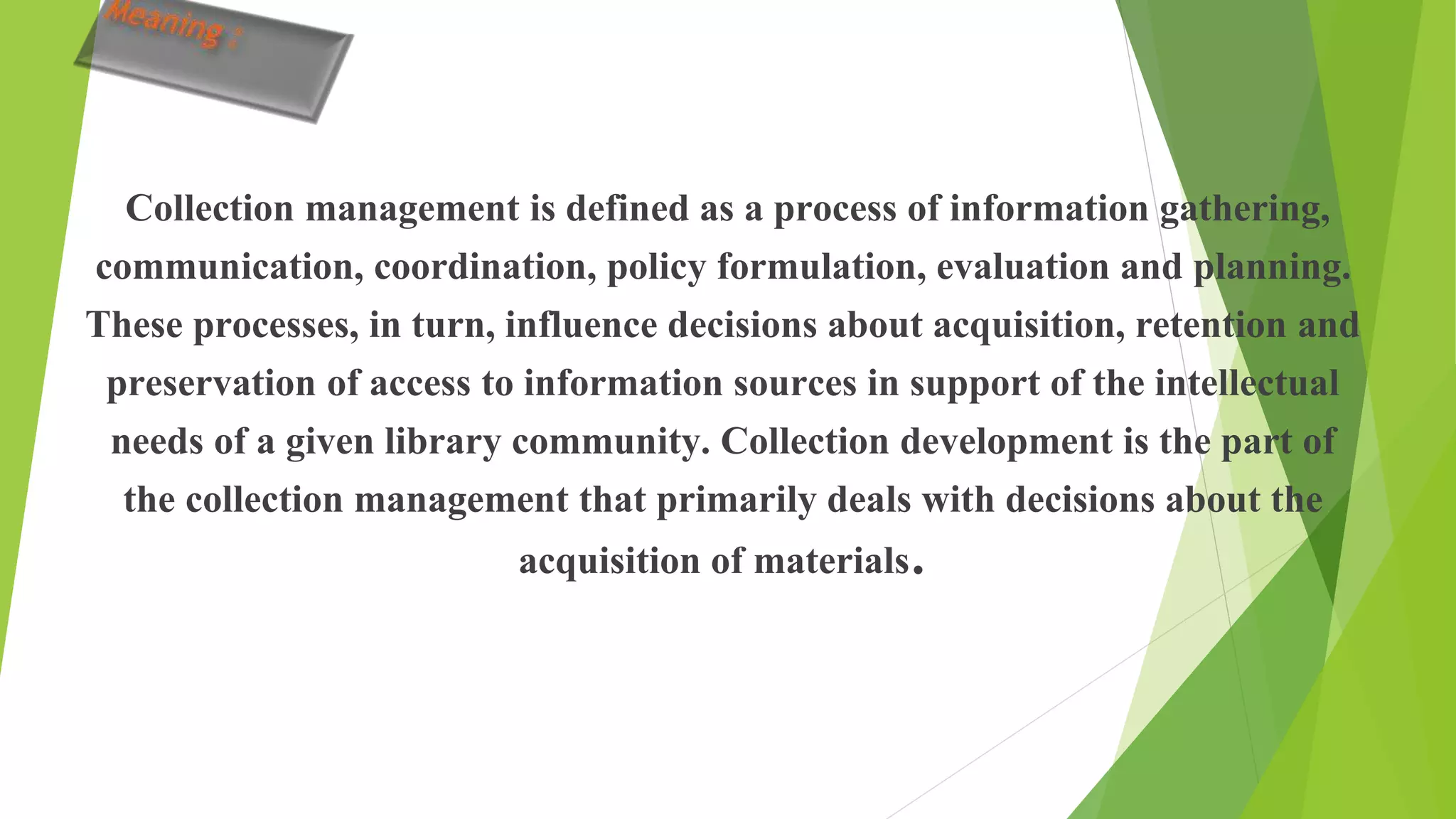
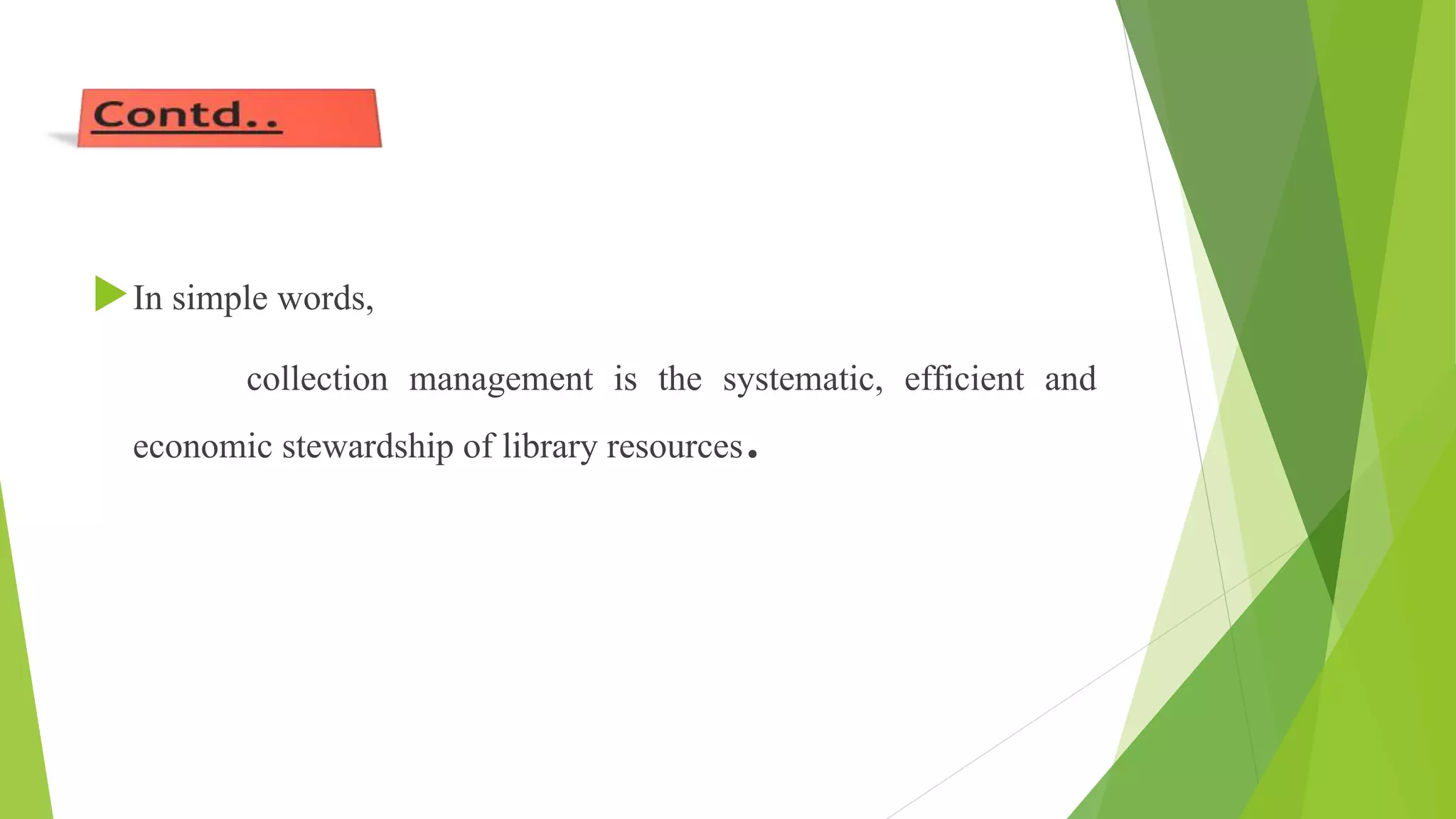


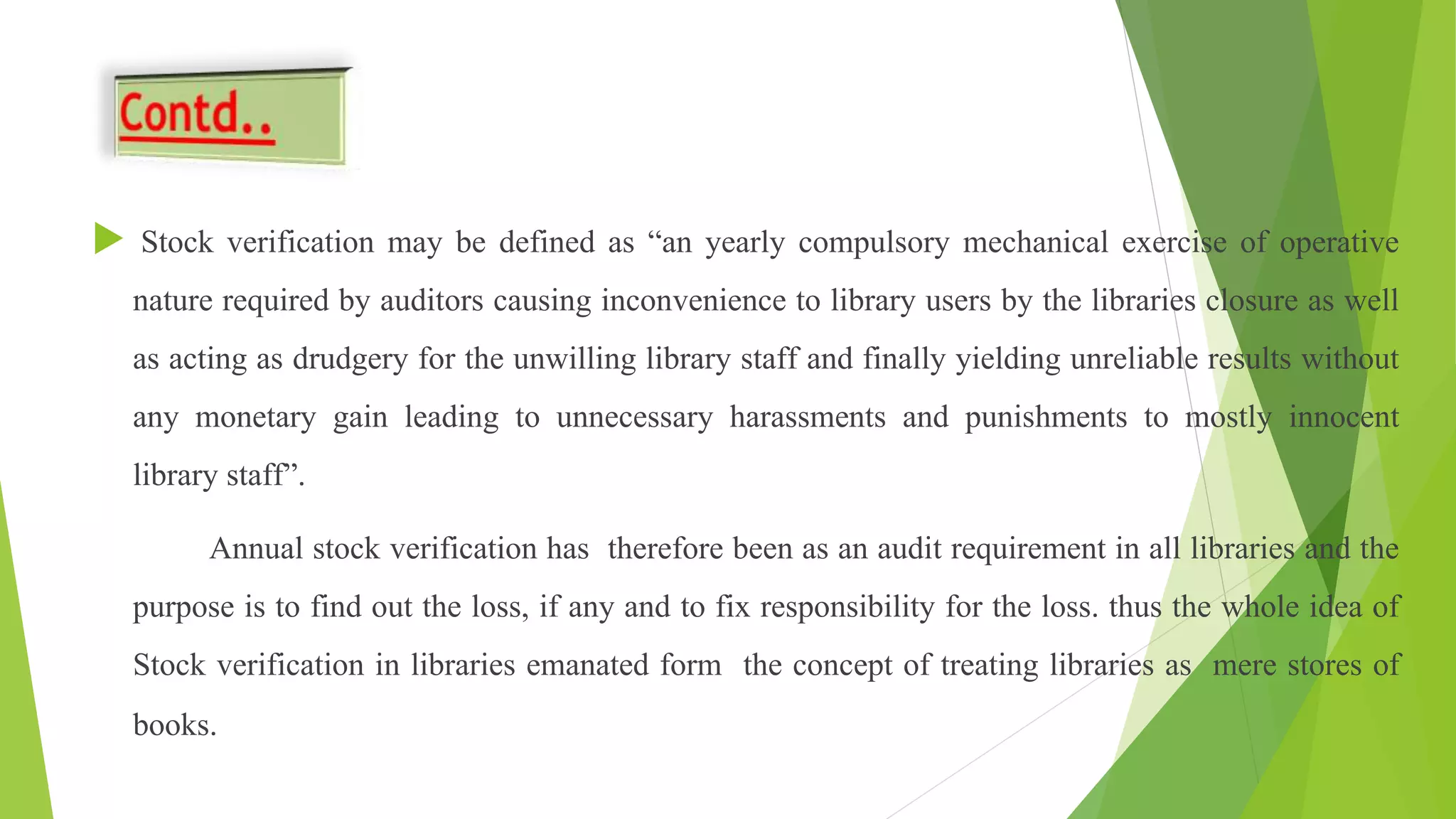


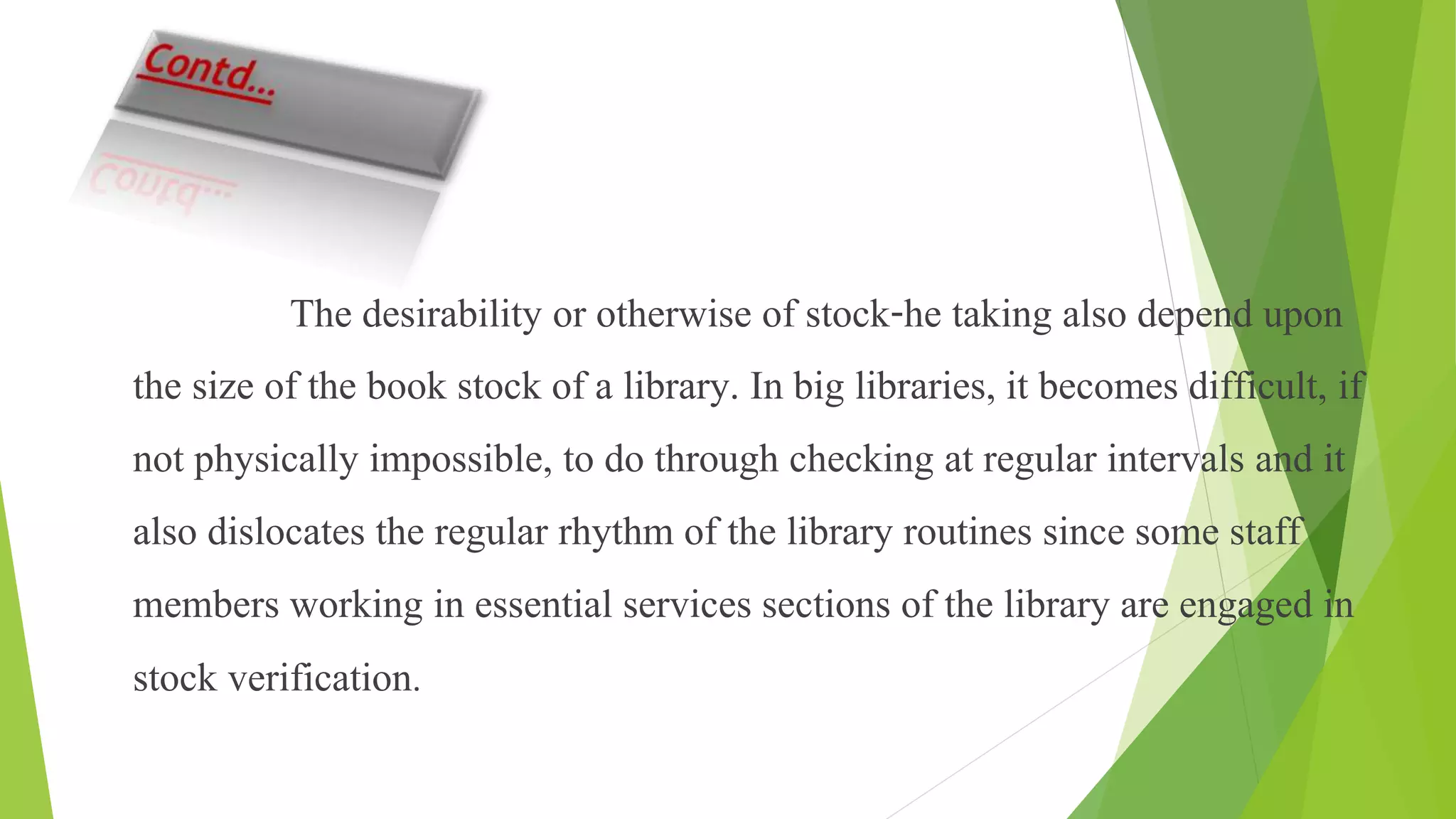


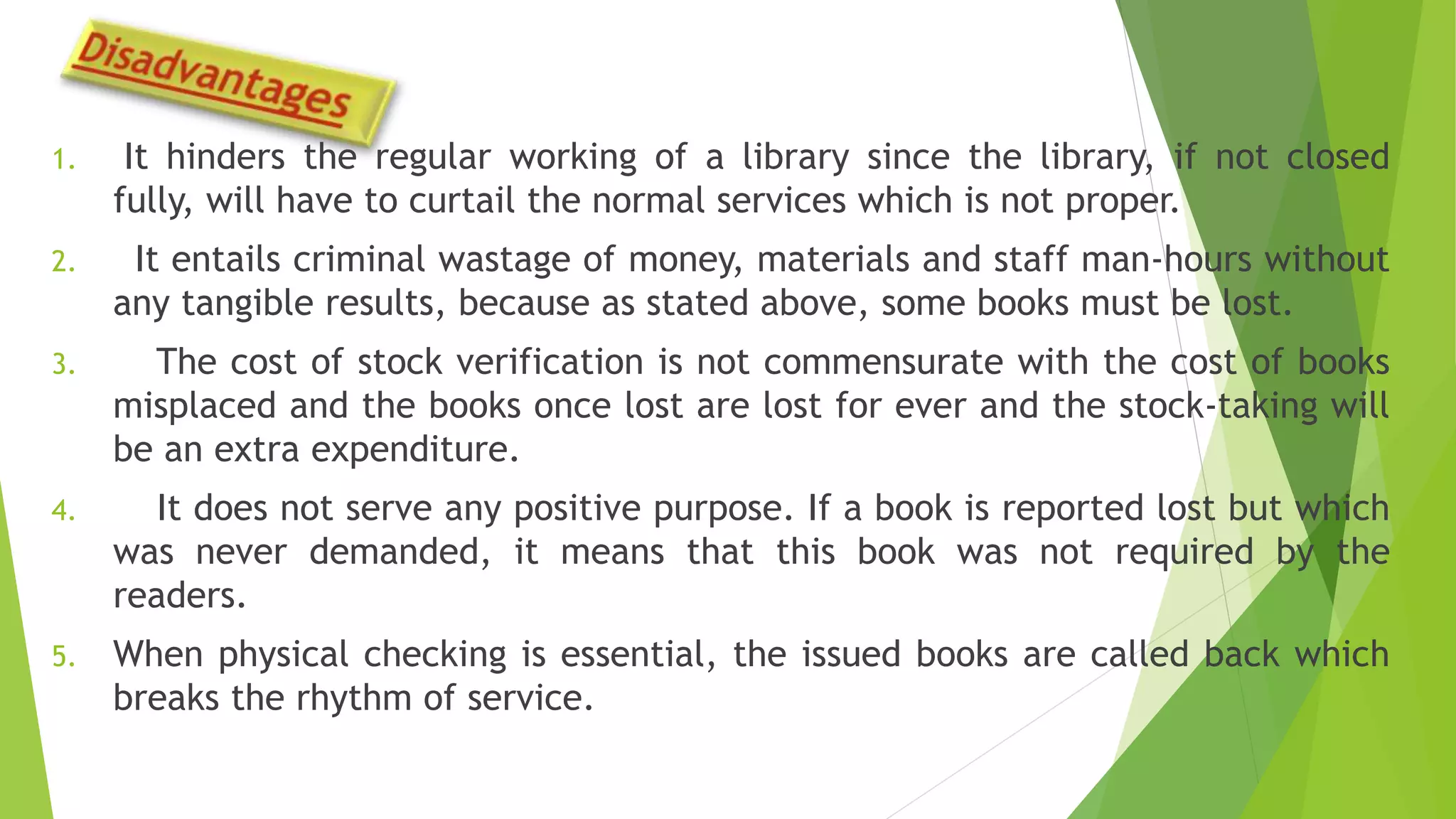
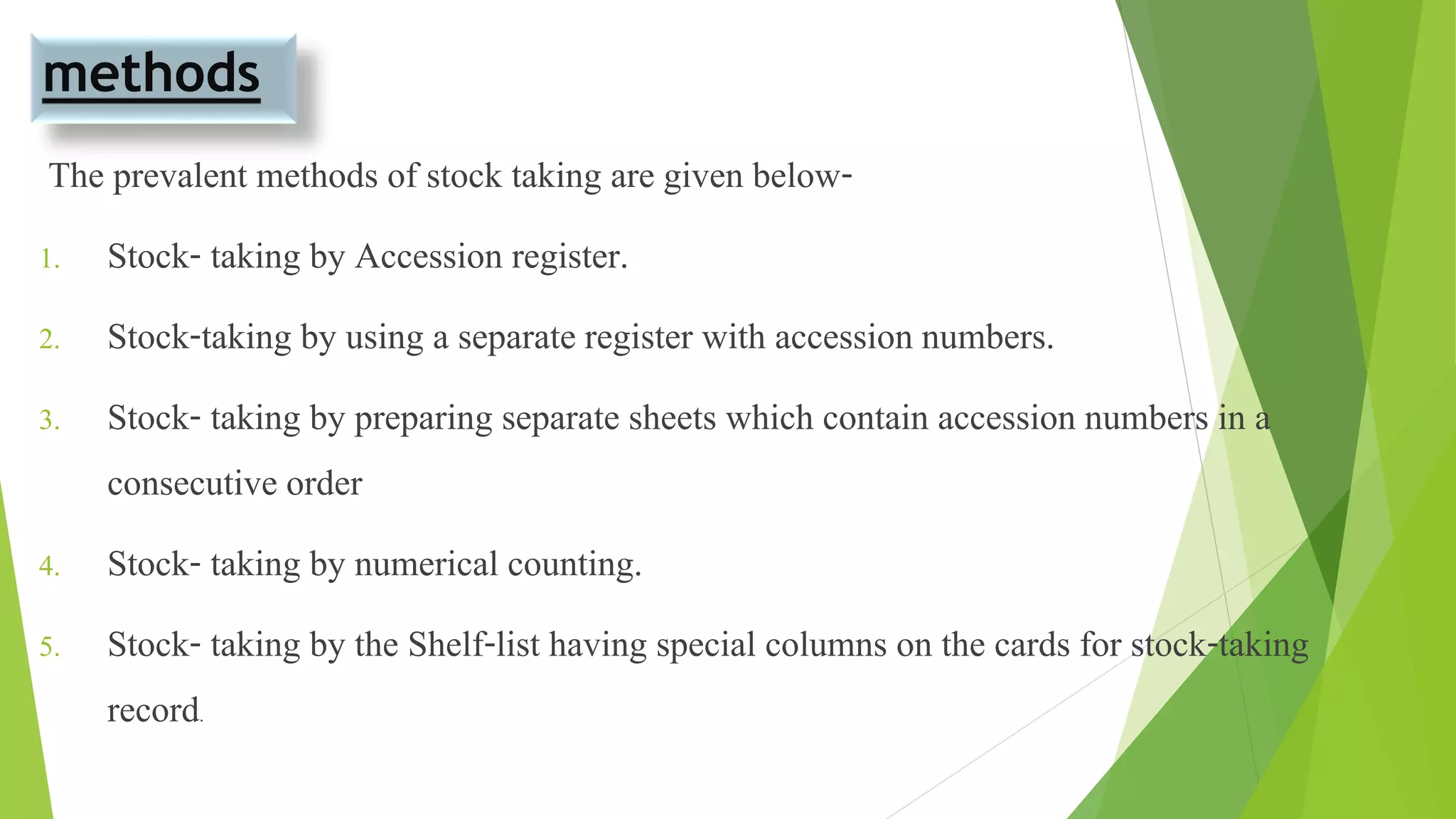




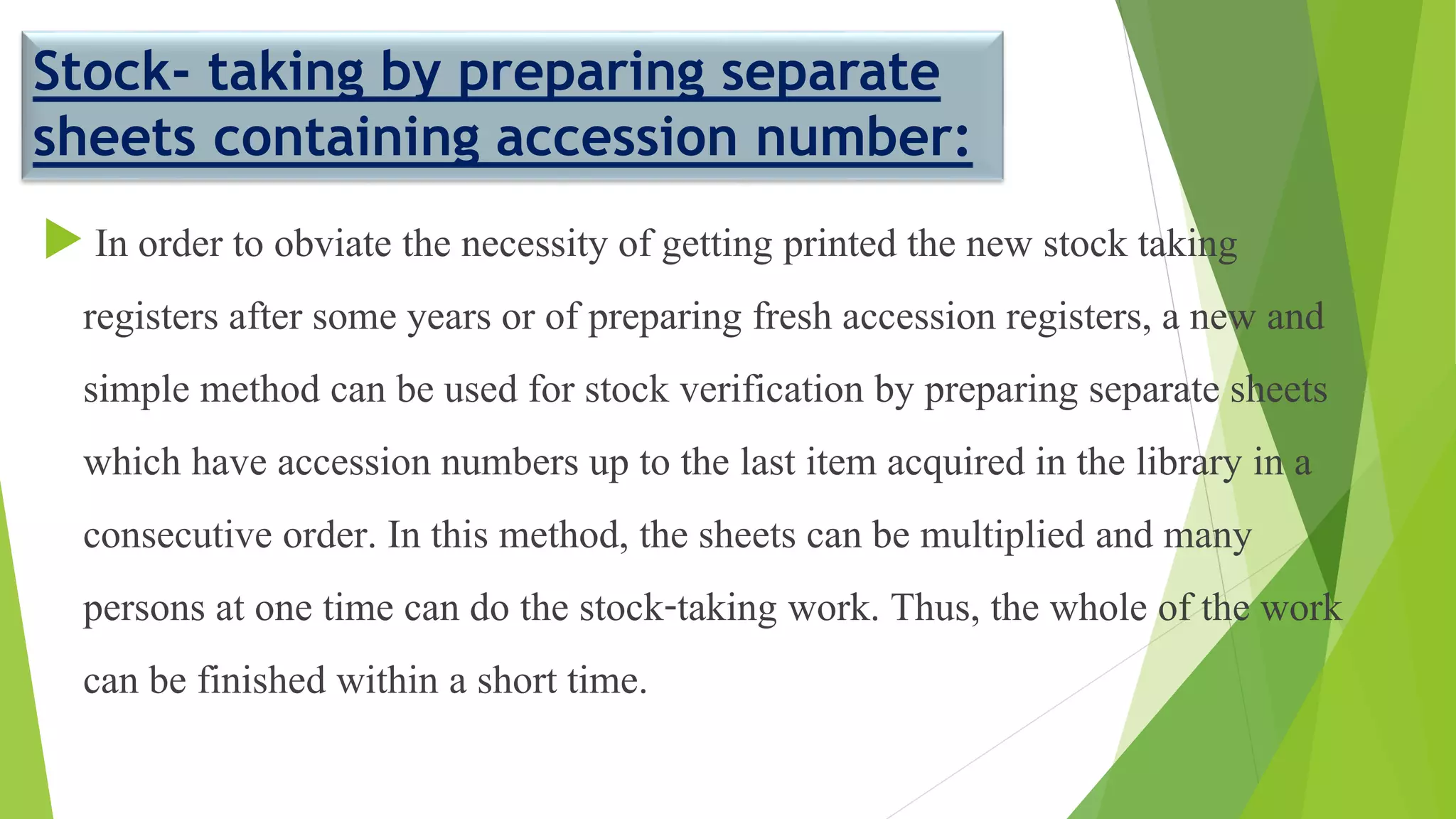


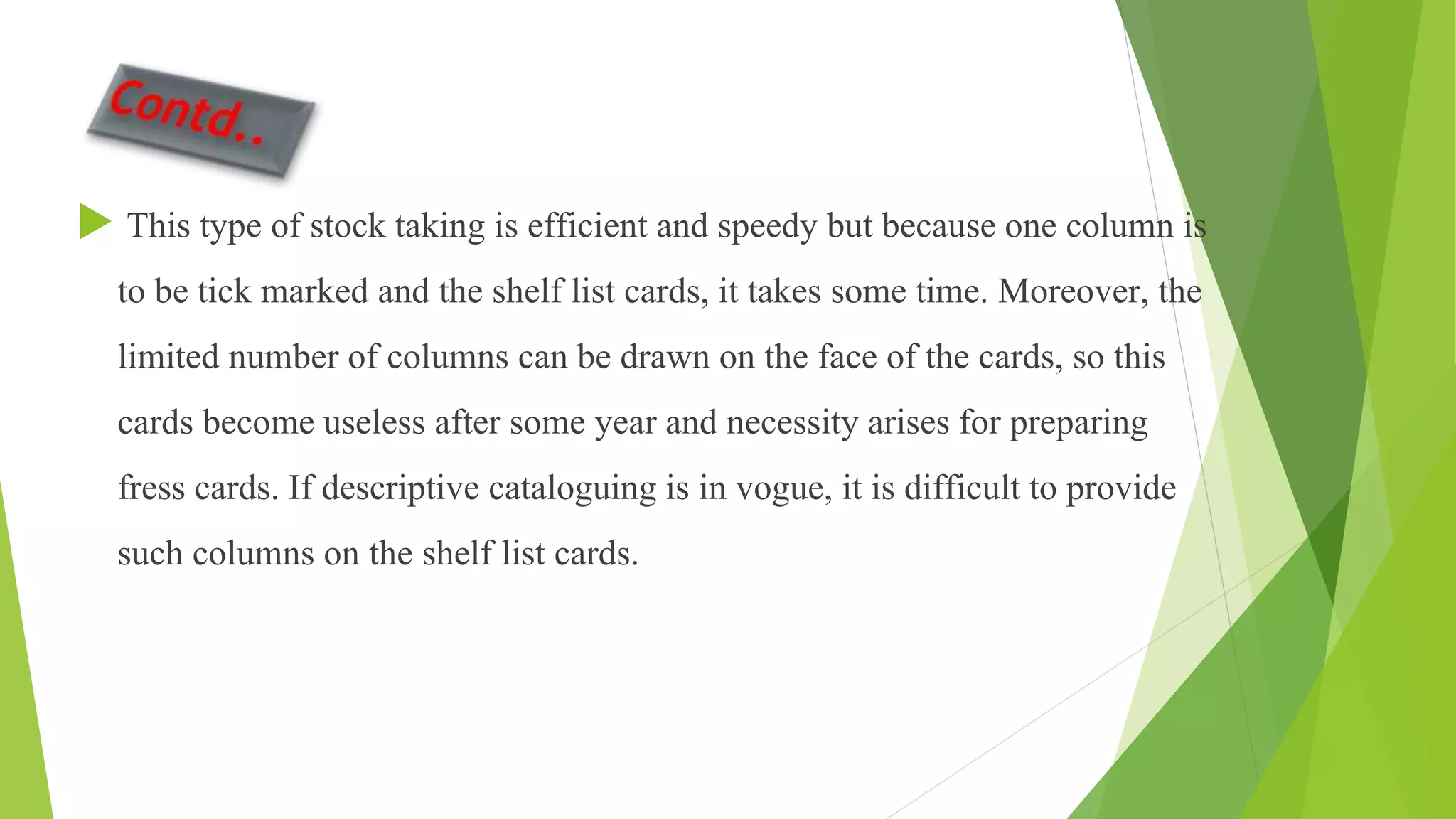

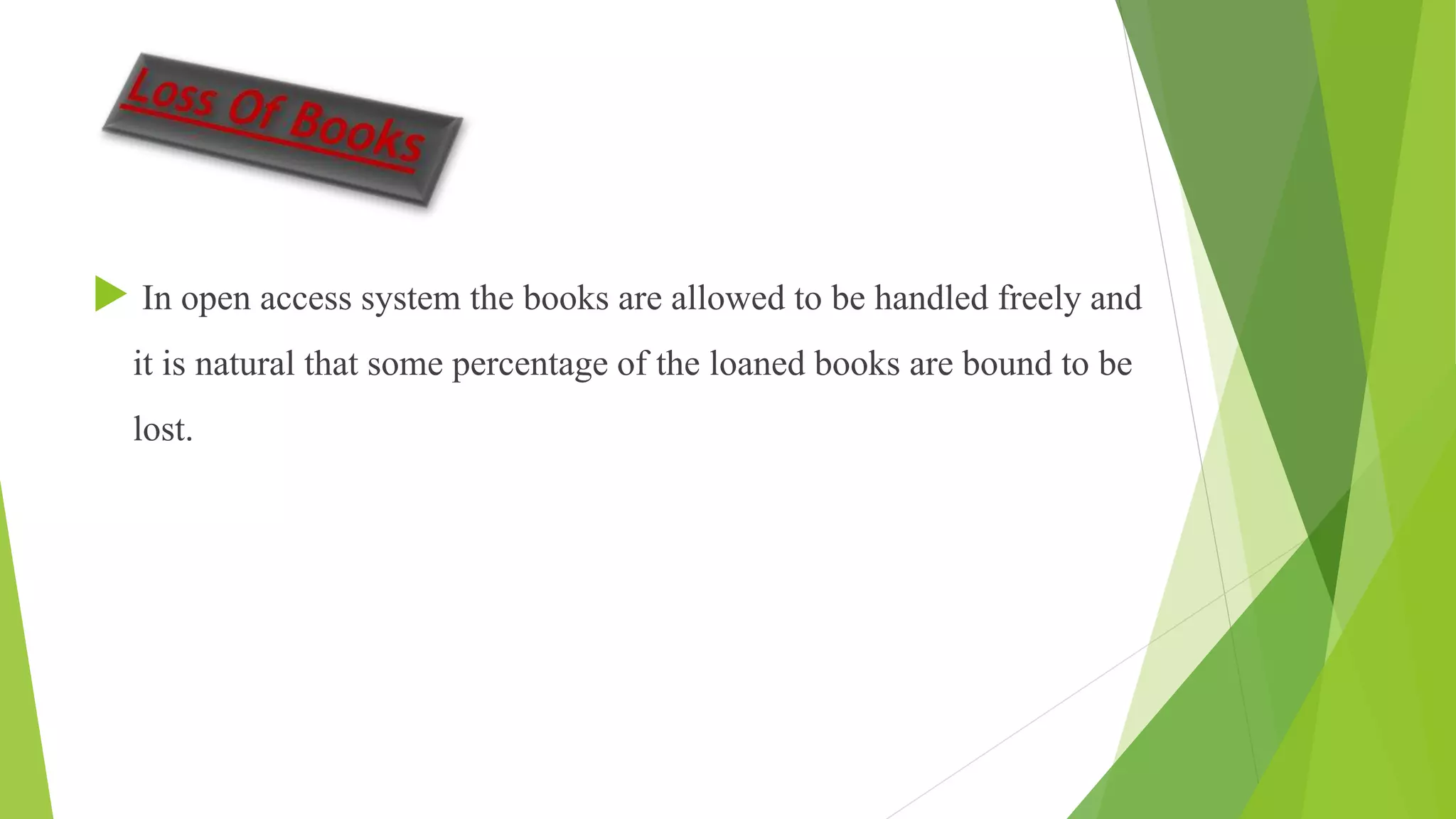



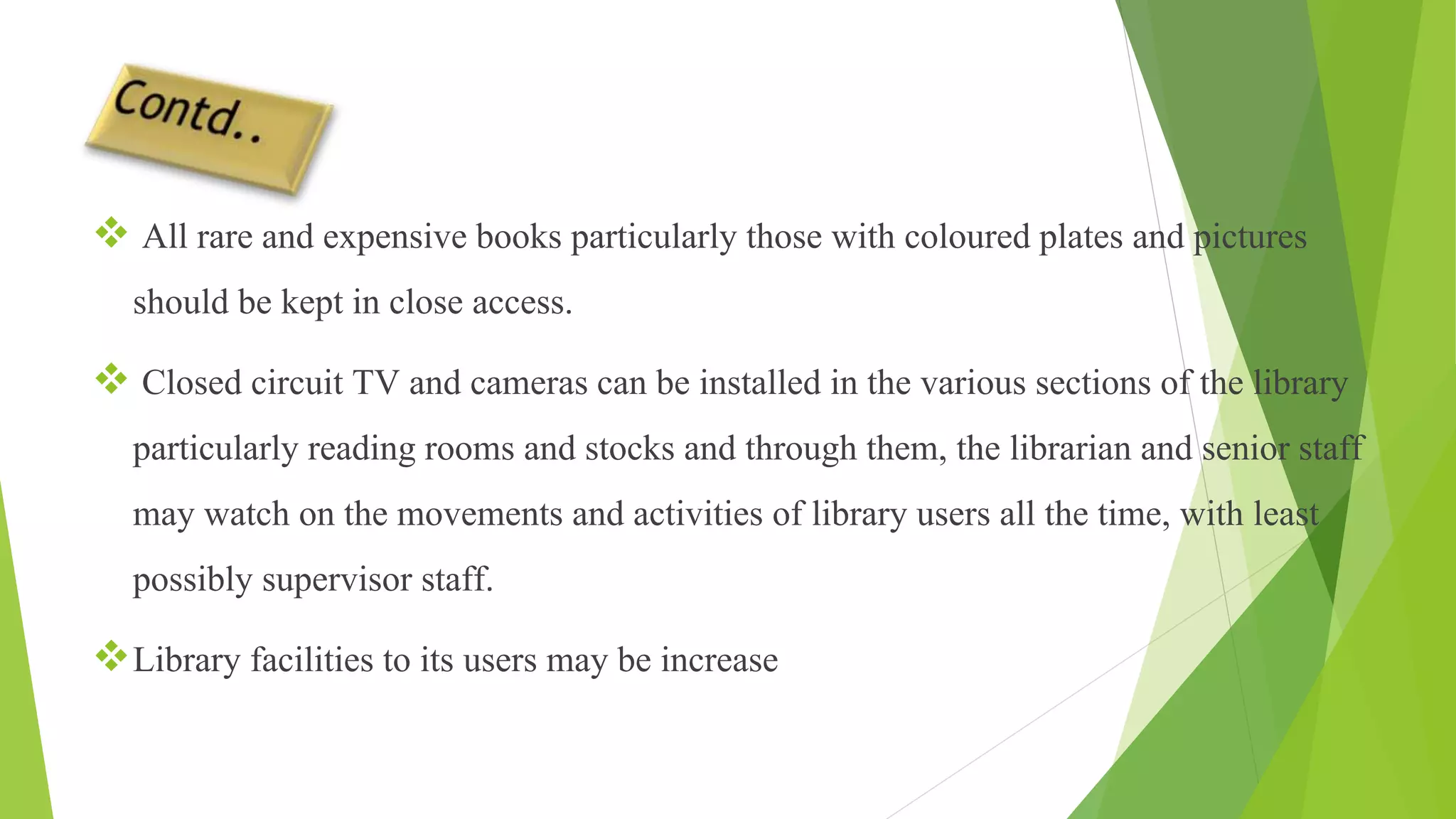

![Reasons to weed
A "well-maintained, well-pruned collection is far more useful than one
filled with out-of-date or unused materials."[2] Weeding a physical
collection has many benefits:[1]
Space is preserved to add relevant materials.
Patrons are able to access useful material quickly, and the librarian can
direct them to information more easily.
The collection is more reputable because it is current.
The librarian can easily see the strengths and weaknesses of the
collection.
Materials are of good quality and physical condition.](https://image.slidesharecdn.com/stockverificationpppppppt-160915134156/75/Stock-verification-PPt-33-2048.jpg)


